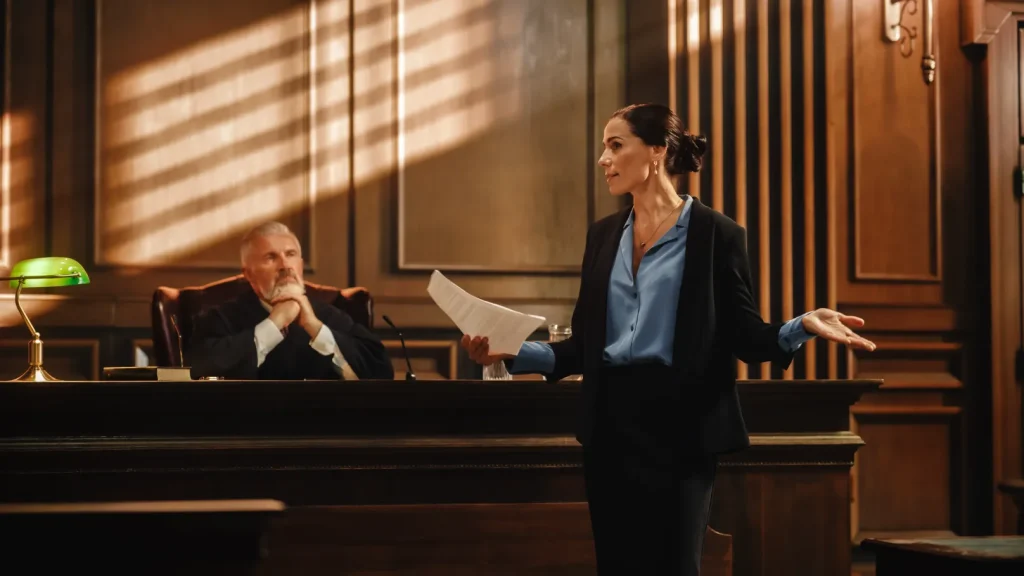Trusted Federal Crime Attorney: Comprehensive Protection Versus Federal Allegations
Trusted Federal Crime Attorney: Comprehensive Protection Versus Federal Allegations
Blog Article
Debunking the Process of Federal Appeals: What You Required to Know
Browsing the detailed world of government appeals can often appear like going across uncharted waters for those unfamiliar with the procedure. Understanding the nuances of appellate court territory, the intricacies of filing a notification of charm, offering a compelling brief, and making a convincing oral disagreement are vital elements that can considerably impact the outcome of a case. By deciphering the layers of complexity surrounding federal appeals, people can gain a more clear insight right into the mechanisms that control this critical point of the lawful system.
Comprehending Federal Appeals Refine
Diving into the complex world of the federal appeals procedure introduces a systematic and organized journey through the judicial system - west virginia federal appeal attorney. Federal charms offer as an important device for evaluating choices made by lower courts. Comprehending this procedure is vital for anyone included in legal procedures at the federal degree
The process normally begins with a celebration disappointed with a reduced court's judgment filing a notification of allure. This sets off an evaluation by a greater court, where a panel of judges evaluates the lawful debates presented by both events. Briefs describing the lawful thinking behind each party's position are sent, and dental debates may be heard to clear up complicated concerns.
The appellate court's decision is based on a complete exam of the lower court's proceedings and the disagreements provided. The courts do not concentrate but reconsider facts on whether legal errors happened that impacted the reduced court's choice. As soon as the appellate court gets to a choice, it can attest, turn around, remand, or modify the lower court's ruling, providing clarity and finality to the legal dispute. Comprehending this process is essential for navigating the complexities of federal allures effectively.
Appellate Court Jurisdiction Explained

Appellate courts have territory over details kinds of instances, generally those including legal mistakes, step-by-step concerns, or inquiries of regulation as opposed to factual disputes. The jurisdiction of appellate courts is usually detailed in statutes and regulations that govern the court system. Recognizing appellate court territory is critical for parties included in the allures procedure as it determines whether a case is eligible for testimonial and the level to which the appellate court can interfere in the reduced court's choice.
Declaring a Notice of Charm
The initial step in commencing the government allures procedure entails submitting a Notice of Appeal with the appropriate appellate court. federal appeals attorneys in kansas. This important document officially notifies the court and the various other parties entailed in the case that the appealing event intends to look for a review of the reduced court's decision. Submitting a Notice of Charm is a strict procedural need that establishes the appellate process moving
When preparing the Notification of Appeal, it is necessary to make sure conformity with the particular regulations and guidelines of the pertinent appellate court. The record should commonly include info such as the case name, the lower court's name, the day of the judgment being appealed, and a succinct statement suggesting the premises for the appeal.
When submitting a Notification of Appeal,Timeliness is of the essence. Missing out on the deadline for submitting this paper can cause the appeal being dismissed, highlighting the relevance of prompt and accurate initiation of the allures process. It is recommended to seek lawful advice to navigate the complexities of filing a Notice of Charm properly.
Briefing and Oral Disagreement
In the appellate procedure, presenting written briefs and involving in oral disagreements play crucial roles in advocating for the appealing celebration's setting prior to the appellate court. Briefs are comprehensive legal documents that describe the celebrations' disagreements, legal authorities, and analysis supporting their settings. These composed submissions offer the court with an in-depth understanding of the realities of the case, the appropriate law, and why the appealing event believes the lower court's decision ought to be reversed.
Complying with the entry and testimonial of the briefs, dental arguments offer the events a chance to additional clarify their placements, attend to any type of concerns the appellate judges may have, and emphasize vital factors from their composed briefs. Oral arguments are a chance for the lawyers to encourage the courts through spoken campaigning for and reactions to inquiries from the bench.

Obtaining the Appellate Court Choice

Final Thought
Recognizing the appellate court jurisdiction, submitting a notice of charm, preparing briefs, and offering oral debates are all vital elements of this procedure. Ultimately, getting the appellate court choice can offer quality and resolution to lawful disputes.
As we proceed from understanding the federal charms procedure to dissecting the ins and outs of appellate court territory, a fundamental element comes to light pertaining to the authority and limits of these higher courts in the legal landscape. Appellate court territory refers to the range of situations that a specific appellate court has the power to examine and determine upon. Unlike trial courts that listen to instances for the first time, appellate courts are limited to evaluating choices made by reduced courts. Recognizing appellate court jurisdiction is essential for celebrations entailed in the allures procedure as it determines whether a case is eligible for evaluation and the degree to which the appellate court can interfere in the reduced court's choice.
Whether the appellate court attests, turns around, or remands the reduced court's choice, recognizing the implications of the ruling is essential for all parties included in the appellate process.
Report this page